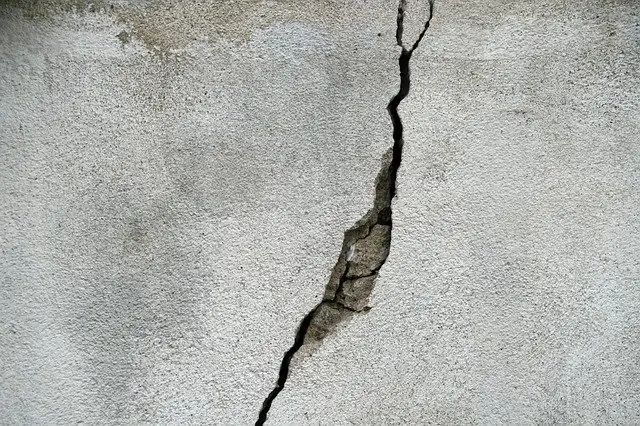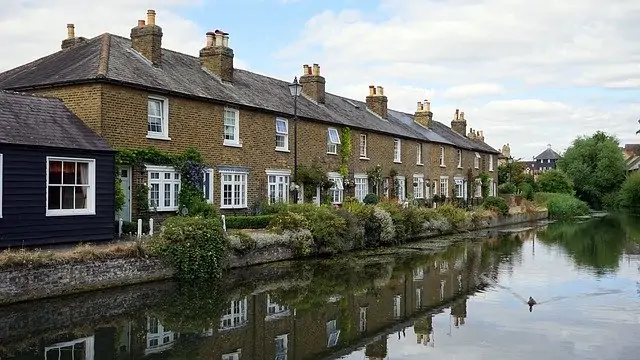How to rectify, spot and check for subsidence
A Guide to Subsidence
Subsidence can be a nightmare for homeowners since it can cause serious problems for your home. Subsidence occurs due to the sinking of the ground beneath the property, which leads to the collapse and sinking of your home’s foundations. As a result, the support, structure, and stability of the property may be weakened considerably.
What Causes Subsidence?
Subsidence may occur in a home for a number of different reasons. These include:
Subsidence due to Tree Roots:
Tree roots are one of the most common causes of subsidence. Oak, willow, ash, and elm trees tend to be the most likely trees to lead to this problem. Tree roots that are planted close to your home will extract and absorb moisture from the soil beneath your home, which leads to the soil drying out, shrinking, and causing ground instability.
Subsidence due to Weather:
Subsidence can also occur when the weather in the area causes the ground beneath your property to change. Soils will contract when the weather is dry and expand when the weather is wet, so a long period of wet weather in the winter followed by a long dry summer can lead to fluctuations in the groundwater and instability in the soil beneath your home.
Subsidence due to Soil Type:
Homes that are built on clay soil are more likely to suffer from subsidence problems. Since clay is very porous, it shrinks when it is dry and pulls away from the foundations, weakening the building’s support. On the other hand, soils that are high in gravel or sand are more vulnerable to being washed away from the foundations if water leaks underneath the property.
Subsidence due to Mining:
Properties that are built in areas previously used as quarries or mines are also more susceptible to subsidence. Properties that are built on top of an area that has been mined previously tend to be weaker with more unstable foundations.
Subsidence due to Leaking Drains:
Water leaking into the soil underneath your property from leaking gutters or drains will wash away the soil foundation. Leaking drains and gutters also lead to water saturating the ground, which can cause the foundation to give way.
Subsidence: How it Occurs:
Subsidence occurs as a result of the ground underneath your home sinking. When the ground sinks, the foundations of your home can become misaligned, particularly if the ground underneath your property is sinking at varying rates.
Subsidence is not the same thing as heave, which occurs when parts of the ground underneath the property shift upwards and push the foundations up higher. It is not the same as a landslide, a problem that occurs when the ground underneath a property is washed away down a slope.
It’s also worth being aware of the differences between subsidence and settlement. Settlement is a downward movement that is caused by the soil becoming compressed by the weight of the building over time and is not as serious as subsidence, which indicates an unstable foundation.
How to Check for Subsidence – Signs of Subsidence in a House:
If a property is dealing with a subsidence problem, you will usually see some tell-tale warning signs outside or inside the home. A visual inspection of the property will help you determine if there is a subsidence problem. Cracks are the main issue to look for.
How to Spot Subsidence Cracks:
Cracks are the main warning signs of subsidence, especially if:
- The cracks are spread across the wall diagonally
- Cracks are present on both exterior and interior wall bricks
- The cracks are at least 3mm wide
- The cracks are wider at the top
- Cracks are close to windows and doors
- The cracks are expanding rapidly
- Cracks are found after a long period of dry weather
- Cracks are found close to where an extension joins the property
However, it’s important to bear in mind that one crack in a wall is unlikely to indicate a subsidence problem. There are many less serious reasons for cracks to occur including the walls or ceilings of your property swelling and shrinking over time due to changes in the temperature. New homes, or homes that have been freshly plastered, may also be more likely to show cracks in the walls as the structure settles or the plaster dries, and these cracks are typically harmless.
Other Internal Signs of Subsidence to Look Out For:
Aside from cracks, there are some other signs of subsidence to look out for. These include:
- Crinkles and ripples at the joints on your wallpaper
- Jamming and sticking doors and windows
What to Do If You Suspect Signs of Subsidence:
If you suspect that you have noticed some signs of subsidence in your home, you should seek help from a qualified chartered surveyor who can carry out a full structural survey on your property. The sooner you spot and get help with the signs of subsidence, the easier they will be to repair.
A surveyor will carry out a thorough inspection of your home. If you already own the home, they will carry out a subsidence investigation survey. If you have noticed potential signs of subsidence in a property that you are considering buying, you should check for subsidence as part of a homebuyer’s survey or building survey.
The surveyor may need to take soil samples to investigate the potential causes of subsidence. The survey will determine whether subsidence is present, the cause and the extent of the movement, and the extent of any damage that has been caused. It will also be able to provide you with further information on the remedial measures that will need to be taken, the risk of any further movement and damage in the future, whether further investigations will be needed, and how to claim insurance for the work.
Contacting Your Insurer With Pictures of Subsidence Inside a House:
You should contact your building’s insurer if you think that you may have subsidence inside your home. If you have not done so already, they will be able to arrange for a surveyor to inspect your home and confirm that the problem is subsidence. You may be required to take photos of the damage and send them to the insurance company to support your claim. Depending on the age of your home, the surveyor may decide that the property needs to be monitored for up to twelve months before it can be determined if the ground is sinking due to subsidence.
How to Rectify Subsidence:
How to deal with a subsidence problem in your home will depend on a number of factors including the cause of the subsidence and the extent of the damage caused. Your surveyor will be able to provide advice on the best course of action to take with your specific property.
If the subsidence is a result of trees planted around your home, the trees and shrubs that are close to and affecting your property may need to be removed; further planting will need to be prevented, and any other plants should be regularly pruned and maintained.
If leaking drains are the cause of subsidence in your property, you will need to ensure that any affected drains and pipes are fully repaired and that the guttering is well-maintained to prevent further issues.
Subsidence Underpinning
In the worst-case scenario, and often as a last resort, you may need to underpin the property, which means laying an additional foundation beneath the home with the purpose of strengthening the existing foundations. Your surveyor will be able to provide you with further information on the best methods to use to stabilise and strengthen your foundation and reduce future subsidence.
How to Prevent Subsidence Cracks Inside:
If you live in a property or are planning to purchase a property that has a higher risk of subsidence, it’s important to understand the steps that you can take to reduce the risk of the foundation sinking. First of all, it’s important to keep any trees that you plant at a safe distance. Avoid planting any trees less than ten metres from your home. Larger trees should be no closer than 40m from your home.
It is also a good idea to set up a system where you can catch as much excess water as possible. Avoid the soil becoming waterlogged by collecting rainfall using water butts and keeping your guttering, pipes, and drains in good condition to avoid leaks.
Buying a House With Subsidence:
Finally, if you are viewing properties with an interest in buying, it’s important to keep an eye out for subsidence signs. Ask the seller and the estate agent if the property has had any subsidence problems in the past. If you suspect that a property you are interested in buying may be dealing with subsidence, get a full building survey done, which will inform you of any current subsidence and the risk of it occurring in the future. If repairs for subsidence have occurred in the past, your conveyancing solicitor will need to get legal documents from the vendor to confirm that the repairs were done to Building Research Establishment standards.
Subsidence can cause real issues for a home, weakening the foundation and damaging the structure. Knowing the signs of subsidence and what to do if you suspect a property is dealing with this problem can help you get it rectified quickly and avoid further damage.


